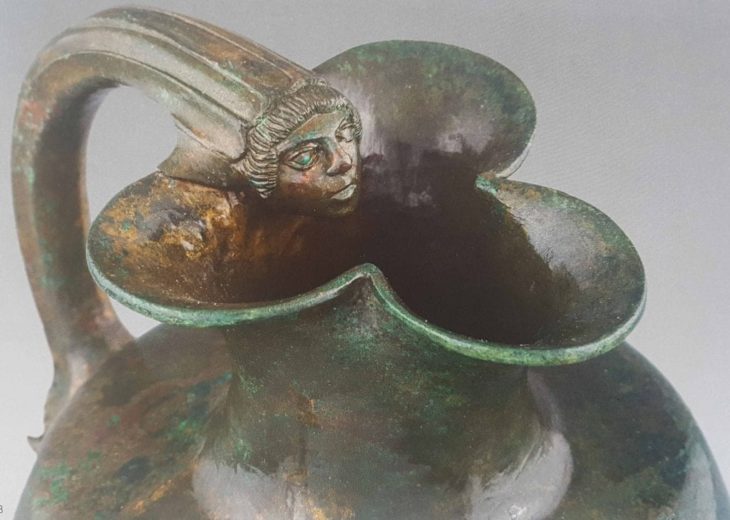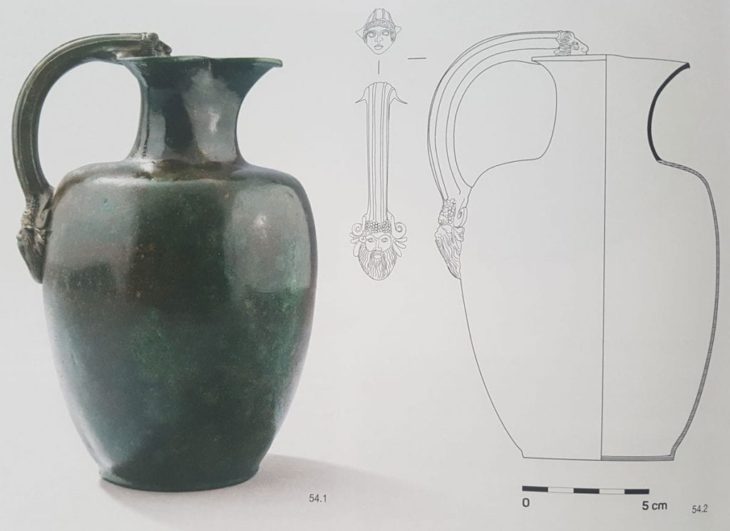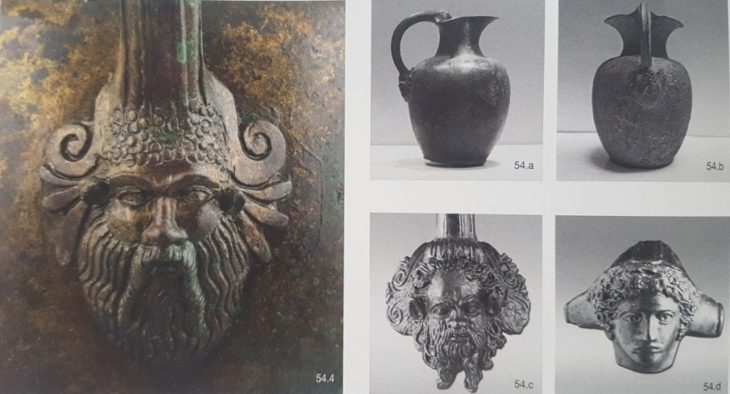The following piece is quite intriguing as it combines two of the most frequently used concepts in ancient pottery and ceramics making. The first one is the key form of ancient Greek pottery – oinochoe or a wine jug. The second one is the representation and use of the image of Dionysus or other figures related to him. The presence of Dionysus, reminders of him, or other figures that have accompanied him, is something that might be thought of as being simply logical from a modern-day perspective on a wine drinking vessel. After all, he was the god of winemaking and wine. So what is it that makes this piece particularly special? Well, to answer that we have to take a closer look at the shape, features and heritage of the artefact. First of all, we will examine the wine jug in terms of its craftsmanship, detailing its material and shape. Secondly, we will turn our attention to the unique imagery of Silenus used on the jug. An ardent follower of Dionysus, Silenus was notorious for his drunken behaviour.

Bronze oinochoe with an unusual opening
Belonging to the world-renowned collection of ancient artefacts of the famous Bulgarian Vasil Bojkov, this bronze oinochoe has stunned visitors with its elegant contours and shape. It is so artfully made that the almost glossy dark green and brown patina can please the eye of everyone. The ovoid body of the oinchoe has a nicely laid out horizontal shoulder and a short concave neck that is completed with an impressive trefoil mouth. Undoubtedly, the most interesting part of the vase is its handle. Exploring it from the end attached to the trefoil mouth, there is a female face looking inwards. Tiny details make the face of the woman look extremely real and distinctive. Her face is broad with carefully crafted and accentuated eyes and lips. Her hair is underlined by parallel lines.

Beautiful bronze oinochoe
Our focus of the object, however, is the lower attachment that adorns the handle. Specifically, this is the head of the King of Nysa and minor rustic god of drunkenness – Silenus. According to Greek mythology, he was a faithful companion and tutor of Dionysus. Interestingly enough, Silenus was often described as a sufficient consumer of wine. He was described as “the oldest, wisest and most drunken of the followers of Dionysus.”

Graceful bronze oinochoe with Dionysus
Back to the bronze oinochoe, the head of Silenus is flanked by two half palmettes, each under a volute. Its curly hair is represented by circular punch marks that continue to the arcs of his eyebrows. His ears are round and small, despite being described in ancient stories as a folkloric man who has ears of a horse. There are carefully detailed wavy lines that underline the beard and the moustache of the Dionysian acolyte. The general expression of Silenus is that of tranquility and calmness.
This bronze oinochoe is attributed to the well-known form 2 type C of Greek oinochoe, dating back to the 5th century BC. What distinguishes this from the other types that have silenoi head is the fact that on type C it usually appears with more humanized characteristics, with a wider skull and smaller ears. This example from the Vasil Bojkov collection takes the representation of Silenus one step further, due to the hair that falls on the forefront and the harmonious facial traits. These can be seen during the third quarter of the century.
The piece dates back to 450-430 BC but its exact provenance is unknown.
